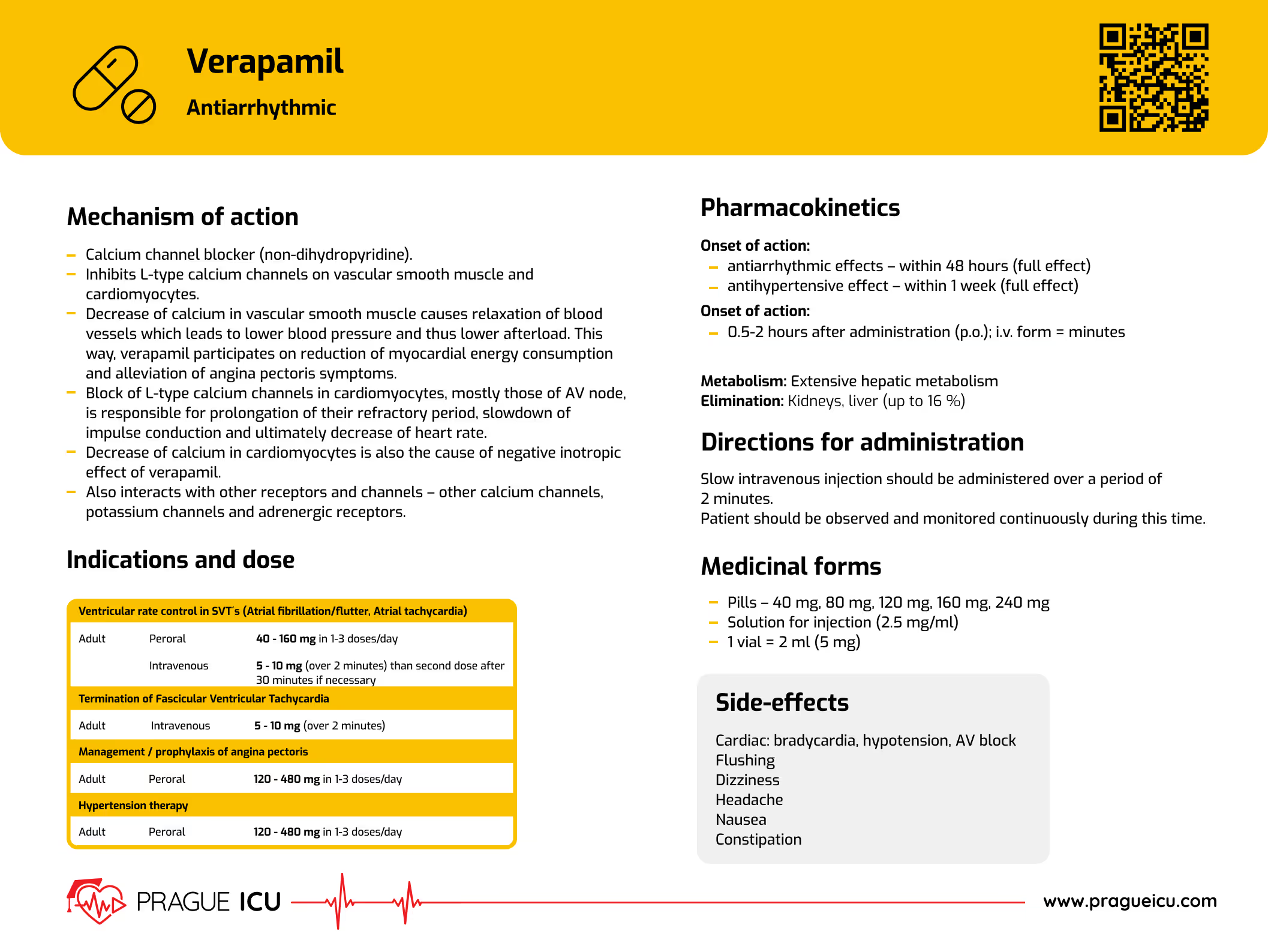
Verapamil (Isoptin, Isocor)
Mechanism of action
Calcium channel blocker (non-dihydropyridine)
Inhibits L-type calcium channels on vascular smooth muscle and cardiomyocytes.
- Decrease of calcium in vascular smooth muscle causes relaxation of blood vessels which leads to lower blood pressure and thus lower afterload. This way, verapamil participates on reduction of myocardial energy consumption and alleviation of angina pectoris symptoms.
- Block of L-type calcium channels in cardiomyocytes, mostly those of AV node, is responsible for prolongation of their refractory period, slowdown of impulse conduction and ultimately decrease of heart rate.
- Decrease of calcium in cardiomyocytes is also the cause of negative inotropic effect of verapamil.
Also interacts with other receptors and channels – other calcium channels, potassium channels and adrenergic receptors.
Indications and dose

Pharmacokinetics
Onset of action:
- antiarrhythmic effects – within 48 hours
- antihypertensive effect – within 1 week
Half-life of elimination:
- 3–7 hours after single dose
- 4.5–12 hours after repetitive dosing
Metabolism: Extensive hepatic metabolism
Elimination: Kidneys, liver (up to 16 %)
Directions for administration
Slow intravenous injection should be administered over a period of 2 minutes. Patient should be observed and monitored continuously during this time.
Medicinal forms
Pills – 40 mg, 80 mg, 120 mg, 160 mg, 240 mg
Solution for injection (2.5 mg/ml)
- 1 vial = 2 ml (5 mg)
Side-effects
Cardiac: bradycardia, hypotension, AV block, VF
Flushing
Dizziness
Headache
Nausea
Constipation
References
- Securon 2.5 mg/ml IV Intravenous Injection - Summary of Product Characteristics (SmPC) - (emc) (medicines.org.uk)
- Verapamil Tablets BP 80mg - Summary of Product Characteristics (SmPC) - (emc) (medicines.org.uk)
- Verapamil: Uses, Interactions, Mechanism of Action | DrugBank Online
- Pharm 101: Verapamil • LITFL • Top 200 Drugs
- Verapamil Monograph for Professionals - Drugs.com



